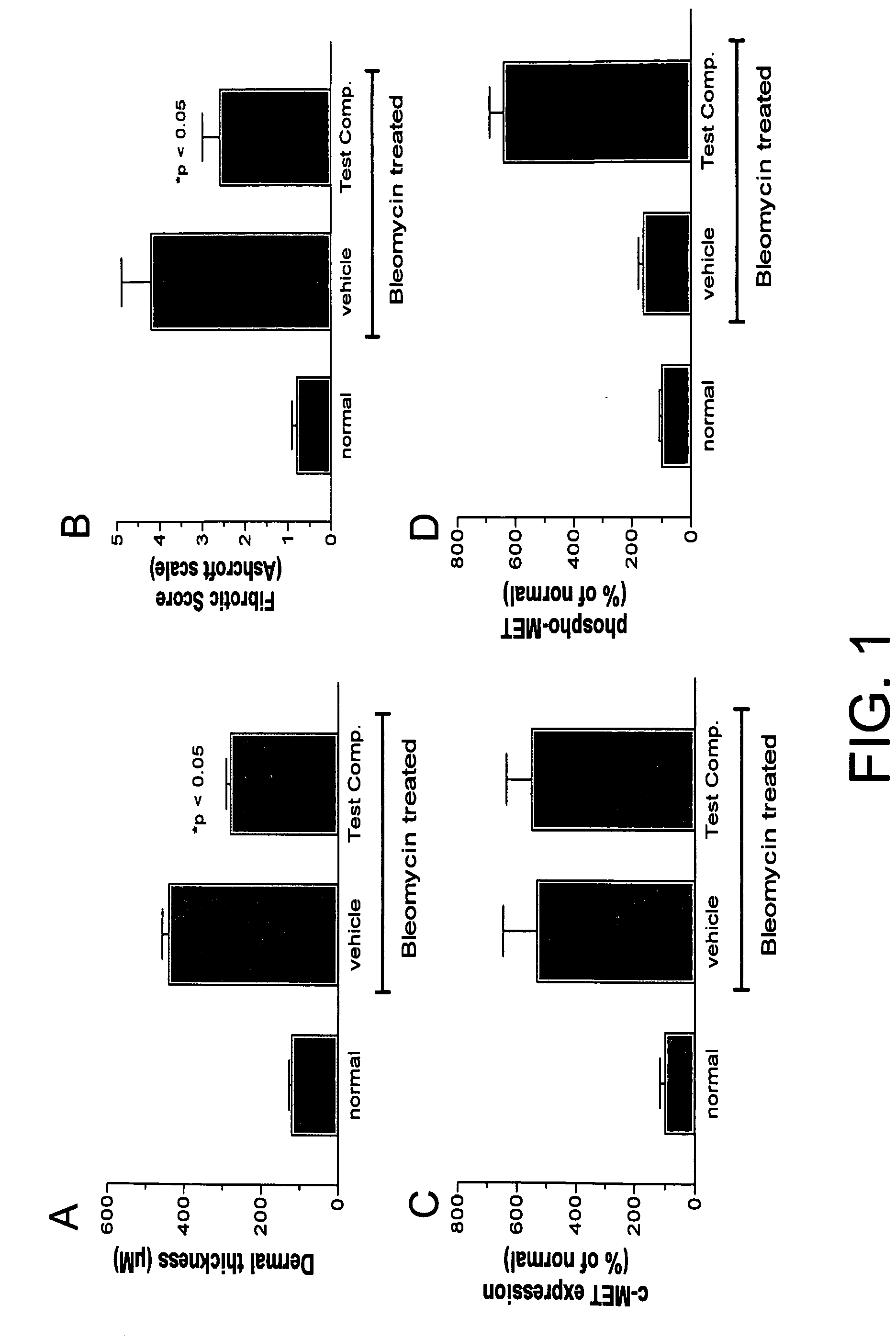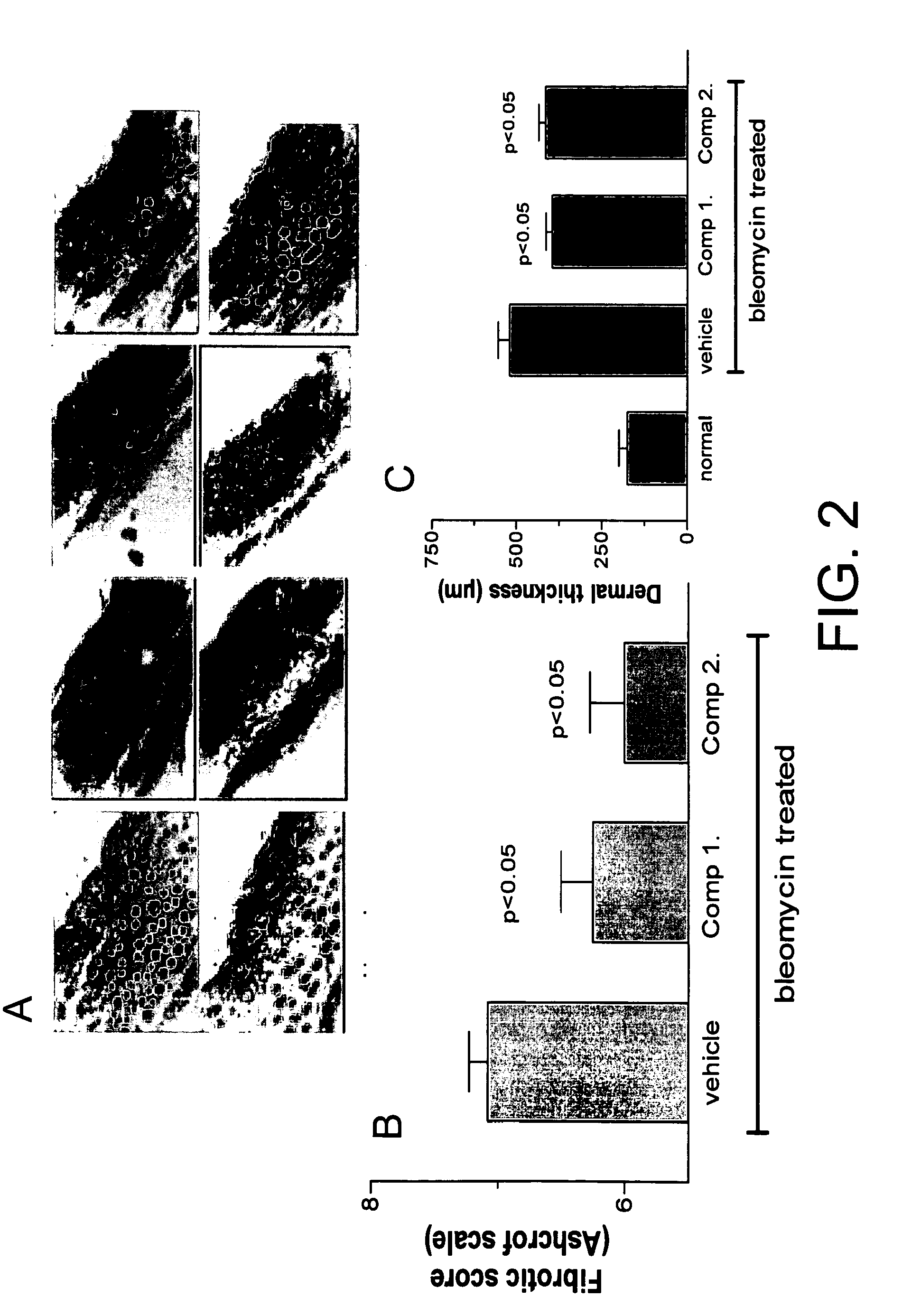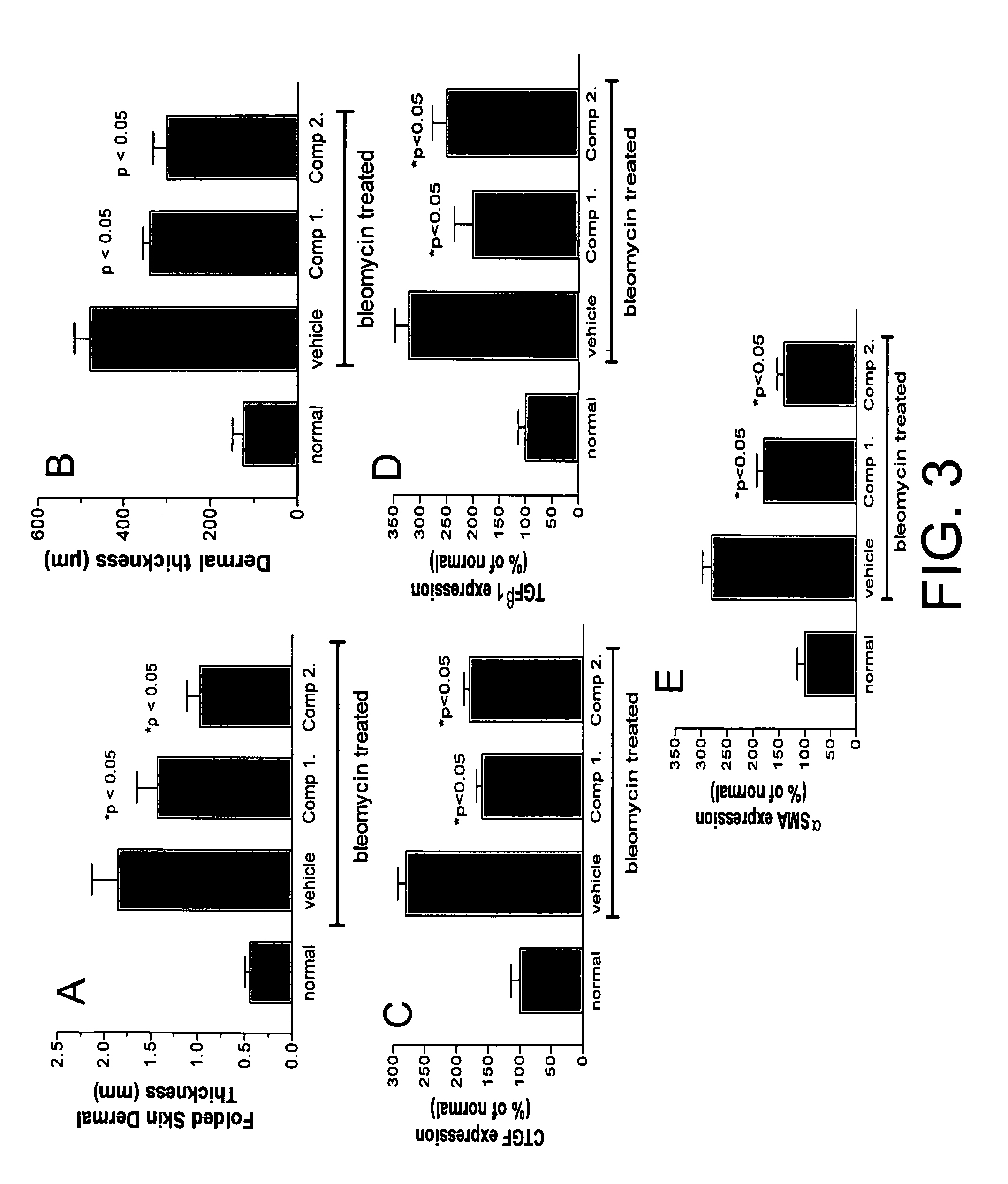Hepatocyte growth factor pathway activators in fibrotic connective tissue diseases
a technology of fibrotic connective tissue and hepatocyte growth factor, which is applied in the direction of heterocyclic compound active ingredients, biocide, drug compositions, etc., can solve the problems of high burden of rare chronic diseases, limited treatment options, and high cost of scleroderma, and achieve the effect of increasing fibrosis
- Summary
- Abstract
- Description
- Claims
- Application Information
AI Technical Summary
Benefits of technology
Problems solved by technology
Method used
Image
Examples
example 1
Activity of Compounds in Scleroderma Models: Methods
[0585]Bleomycin model. In a pilot study, bleomycin (Sigma) was dissolved in phosphate buffered saline (PBS) at a concentration of 1 mg / ml and 100 μl injected subcutaneously into the shaved backs of C57BL / 6 mice with a 27 gauge needle daily for four weeks. In one study, vehicle (n=10) or test compound (n=10) (2 mg / kg, i.p) treatment was administered simultaneously with bleomycin infusion (co-treatment) for four weeks. Phosphate-buffered saline (PBS) was given instead of bleomycin in a placebo group (n=10). At the end of each dosing period, the mice were euthanized by CO2 inhalation on the day following final treatment.
[0586]In another study designed as an intervention mode, after a delay of three weeks following the start of daily bleomycin administration, test compound or vehicle were administered daily for three weeks.
[0587]TSK1 / + model. The tight skin (TSK) mouse from Jackson Laboratories was used. Female TSK1 / + animals at six we...
example 2
Bleomycin Model
[0596]As shown in FIG. 1A-D, by histological evaluation, the compound of the invention decreases dermal thickness (H&E stain; FIG. 1A) and fibrotic score (Trichrome staining; FIG. 1B). Using immuno-histochemical staining of total c-Met and phospho-c-Met, total c-met upregulation occurred with bleomycin (FIG. 1C) and the compound increased phosphorylation of c-met but not in the vehicle group (FIG. 1D).
[0597]In another co-treatment study using the bleomycin model and two compounds of the invention, quantitation of the histological evaluation using H&E staining (FIG. 2A, top row) and Trichrome (bottom row) is shown for normal (left panels), vehicle (center left panels), and two compounds (right ceter and far right paels). Fibrotic score (FIG. 2B) and dermal thickness (FIG. 2C) are quantitated. In both measurements, the compounds were effective at lowering the score and thickness.
[0598]In the intervention study using bleomycin, folded skin dermal thickness, dermal thickn...
example 3
TSK Model
[0599]In the TSK model, reduction in folded skin dermal thickness, dermal alpha-SMA, dermal TGF-beta expression and lung hydroxyproline were found to have occurred as a result of administration of a compound of the invention (FIG. 4A-D, respectively).
[0600]In another experiment using TSK1 / + mice, five-week old TSK-1 / + mice were injected (i.p.) once daily with vehicle (n=10) or compound of the invention (2 mg / kg, n=10) for 10 days. At the end of the treatment period, truncal skin was harvested for histological and fibrotic analyses. As seen in FIG. 5, treatment with compound attenuates fibrotic progression in skin (Trichrome staining).
PUM
| Property | Measurement | Unit |
|---|---|---|
| concentration | aaaaa | aaaaa |
| diameter | aaaaa | aaaaa |
| structure | aaaaa | aaaaa |
Abstract
Description
Claims
Application Information
 Login to View More
Login to View More - R&D
- Intellectual Property
- Life Sciences
- Materials
- Tech Scout
- Unparalleled Data Quality
- Higher Quality Content
- 60% Fewer Hallucinations
Browse by: Latest US Patents, China's latest patents, Technical Efficacy Thesaurus, Application Domain, Technology Topic, Popular Technical Reports.
© 2025 PatSnap. All rights reserved.Legal|Privacy policy|Modern Slavery Act Transparency Statement|Sitemap|About US| Contact US: help@patsnap.com



